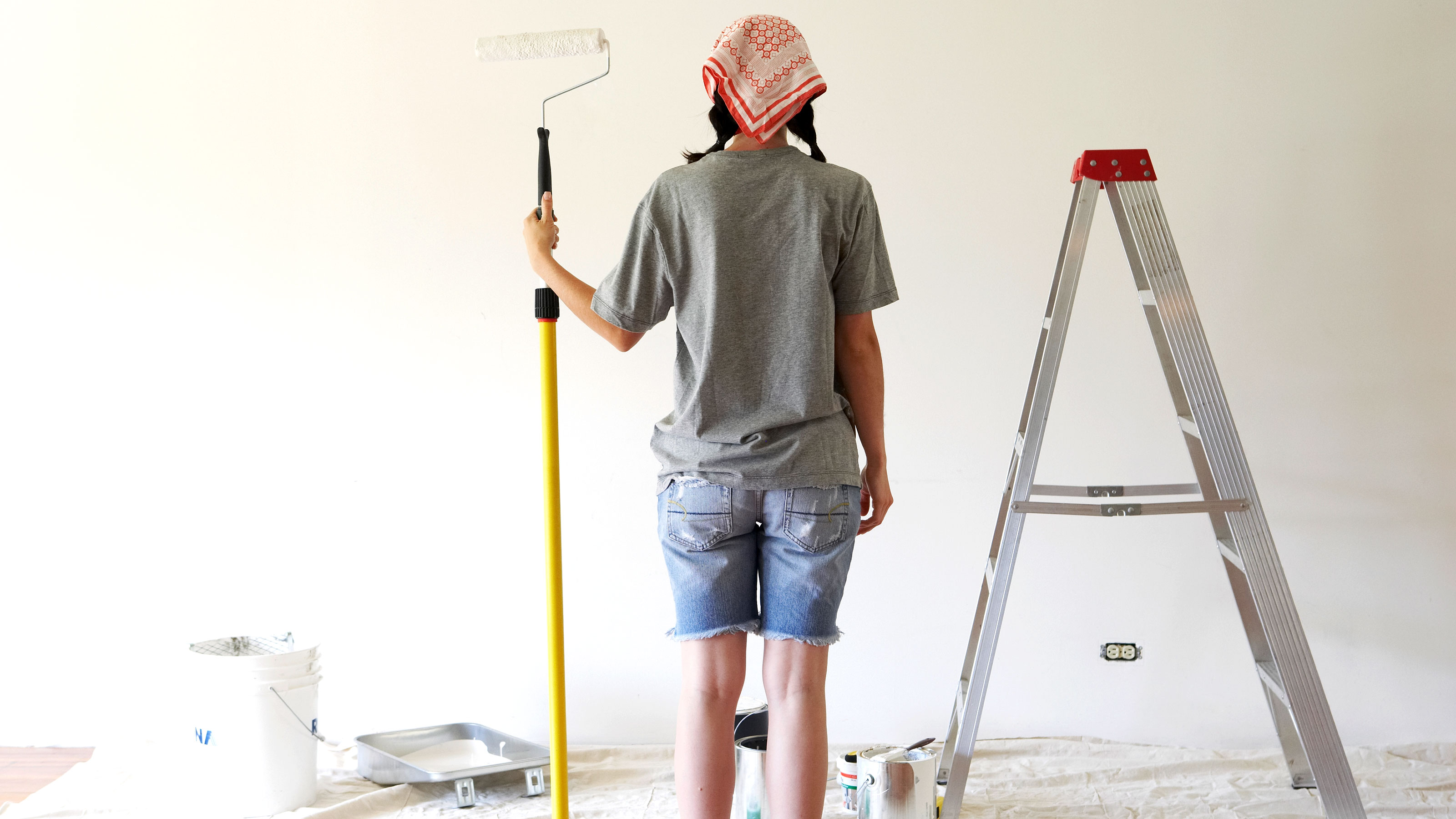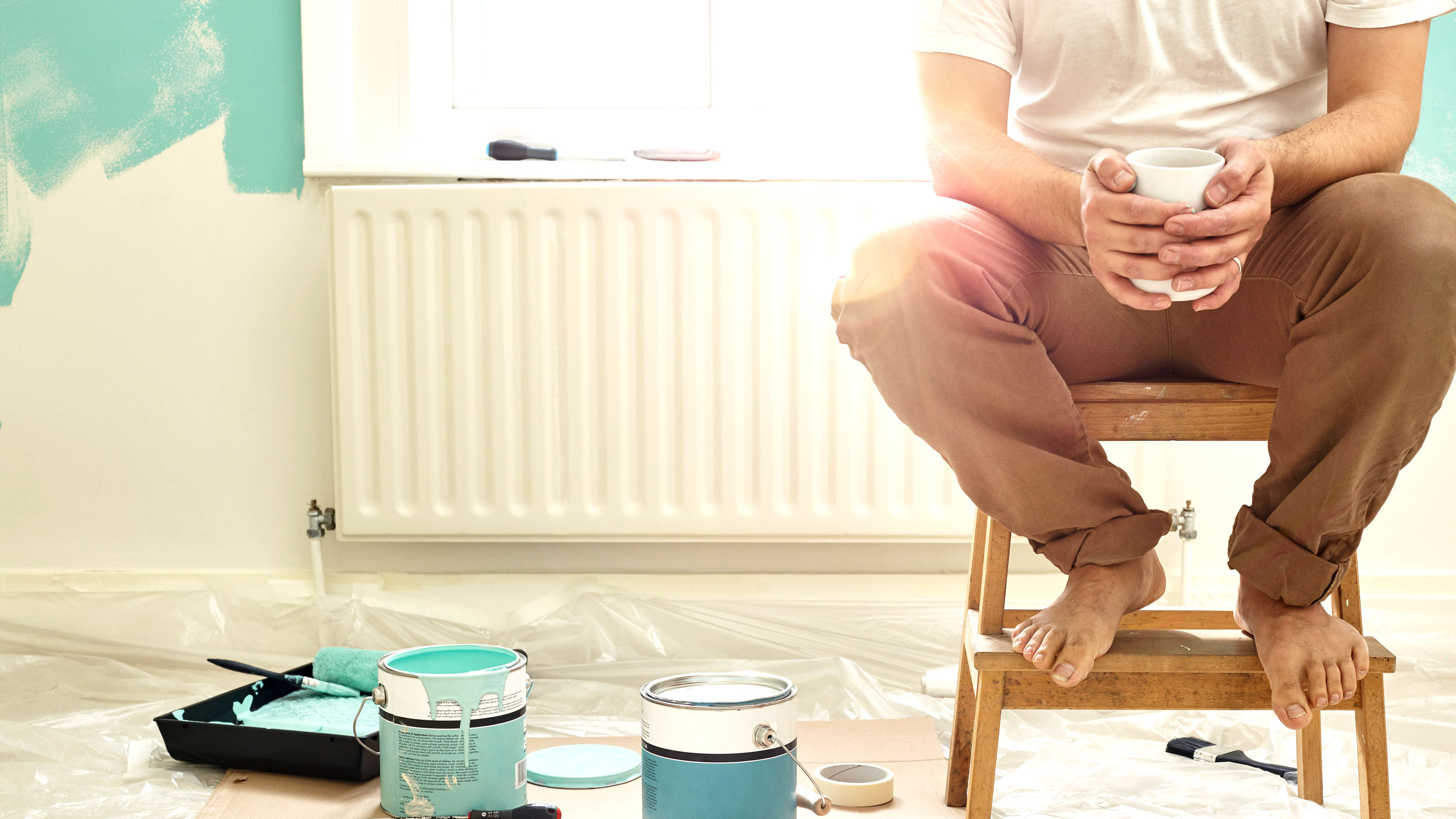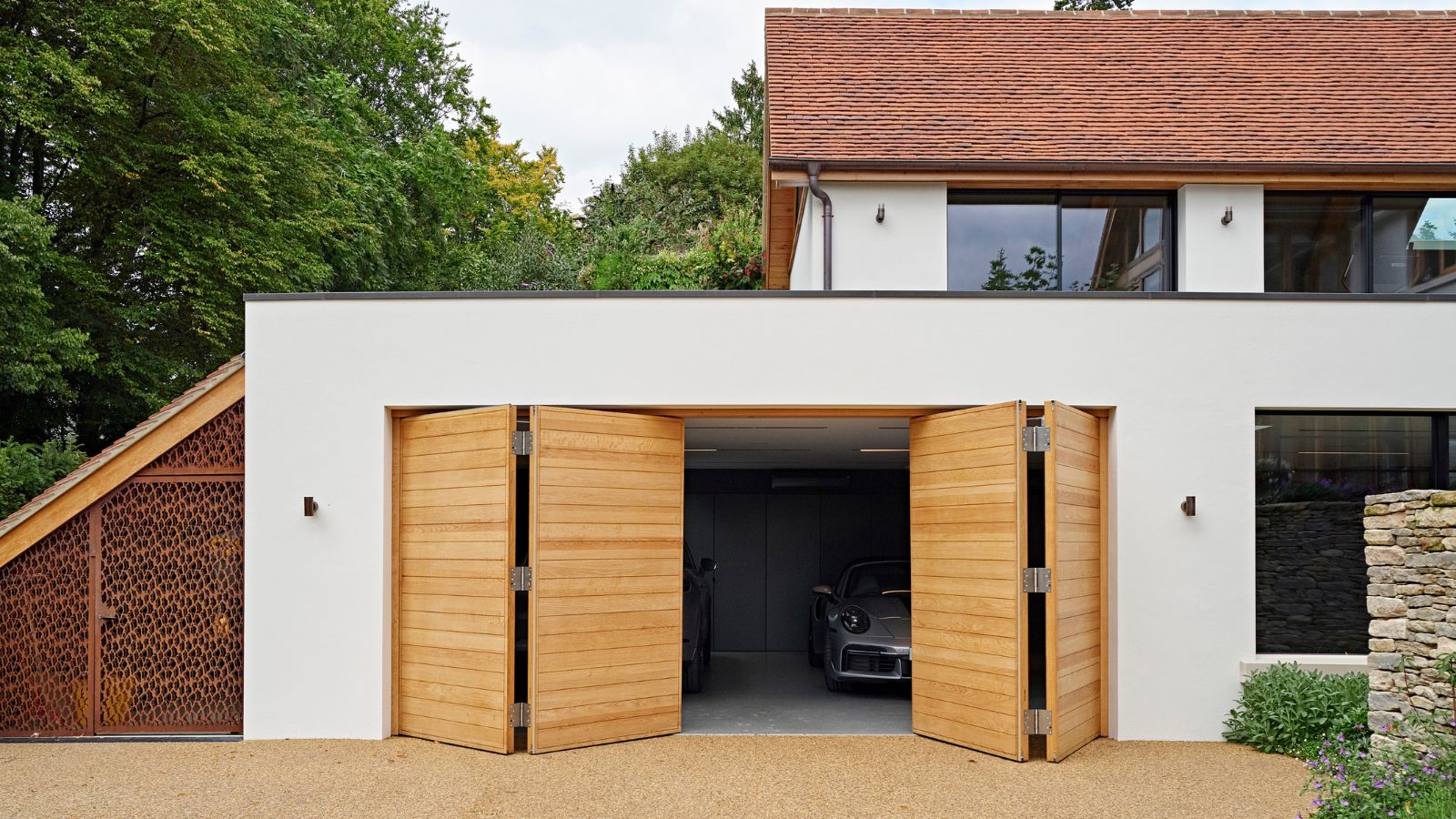How long does paint take to dry? A key guide to drying times
How long does paint take to dry? Too long to sit and watch, but knowing paint drying times is critical to getting a good-looking, long-lasting finish

If you’ve got a paint project coming up ask yourself How long does paint take to dry? It is essential that you know the drying times of the different paints you are going to use on the project so you can plan ahead. This will help get the job done quicker, so you don’t have to sleep downstairs any longer or wait as little as possible before you can occupy the lounge again.
If you are painting a wall it is most likely that you are using an emulsion that will be touch dry in an hour and ready to recoat in a couple of hours. While your gloss or satin paint will take longer to dry. So knowing paint drying times will help you decide where you are going to start and when you should be finished.
Here we take a closer look at the types of paint you use in a typical paint project, how long they take to dry and how long before you can recoat.
How long does paint take to dry: Water-based paints
This will depend very much on what type of paint is being used, but as a general rule water based paints dry quicker than oil based paints.
Water based paints come in a host of guises and typically cover the range of paints you will use in home decorating. These include emulsion which is typically used for painting a ceiling or wall.
Here we list the paints and their typical drying times:
Emulsion paint
Touch dry: 1-2 hours | Recoat: 2-4 hours
Gloss, semi-gloss paint
Touch dry: 2+ hours | Recoat: 6+ hours
Satin paint
Touch dry: 2+ hours | Recoat: 6+ hours
Eggshell
Touch dry: 1-2 hours | Recoat: 6+ hours
Undercoat
Touch dry: 1-2 hours | Recoat: 2+hours
Chalk paint
Touch dry: 1 hour | Recoat: 2 hours

How long do oil-based paints take to dry?
Oil-based paints are typically those used to finish trim and need to be used in areas where a more hard-wearing finish is required. These include gloss, satin and undercoat which are typically used for painting skirting boards, windows and doors. Common drying times include:
Gloss, semi-gloss paint
Touch dry: 6+ hours | Recoat: 16+ hours
Satin paint
Touch dry: 6+ hours | Recoat: 16+ hours
How long does it take for paint to fully dry?
All paints go through the same stages once they have been applied. They are wet, before becoming touch dry and finally completely dry which is also known as cured.
Tough dry and recoat times are different to completely dry — aka fully cured. For example, a chalk paint can be touch dry within an hour and recoatable within two hours, but it can take up to three weeks for it to be completely dry and hardened.
An oil-based paint – which can include the best gloss paint – takes longer to become touch dry and recoatable compared with a water-based paint, but is fully cured in much less time, typically three to seven days.
How do you know when paint is dry?
The first thing to do is make sure that you read the manufacturer guidelines on the tin or container. This will give you the recommended drying time. It will tell you when the paint should be touch dry and when it will be dry enough for a second coat aka recoat.
Also consider if you are painting plywood, or similar, or painting over previously painted wood. Drying times are typically quicker on bare wood.
But the manufacturer's guidelines are exactly that — a guideline. Drying times can differ depending on conditions, so the simple solution is to do a touch test. Wait until near the recommended touch dry time and pick an out of the way area and lightly touch the paint. If still sticky, leave and try again 30-60 minutes later.
How can I make paint dry faster?
The conditions in a room or area can make a difference to how quickly paint can dry. Open doors and windows to create a constant airflow. If you have a fan, use it; this will help get rid of any paint fumes quicker as well.
Another tip is to make sure that you apply thin coats rather than thick coats. Not only will this help the paint dry quicker but it will ensure a stronger hard-wearing finish. Also eco paints with a very low VOC (volatile organic compounds) tend to dry quicker.
Get the Homebuilding & Renovating Newsletter
Bring your dream home to life with expert advice, how to guides and design inspiration. Sign up for our newsletter and get two free tickets to a Homebuilding & Renovating Show near you.
Steve Jenkins is a freelance content creator with over two decades of experience working in digital and print and was previously the DIY content editor for Homebuilding & Renovating.
He is a keen DIYer with over 20 years of experience in transforming and renovating the many homes he has lived in. He specialises in painting and decorating, but has a wide range of skills gleaned from working in the building trade for around 10 years and spending time at night school learning how to plaster and plumb.
He has fitted kitchens, tiled bathrooms and kitchens, laid many floors, built partition walls, plastered walls, plumbed in bathrooms, worked on loft conversions and much more. And when he's not sure how to tackle a DIY project he has a wide network of friends – including plumbers, gas engineers, tilers, carpenters, painters and decorators, electricians and builders – in the trade to call upon.

